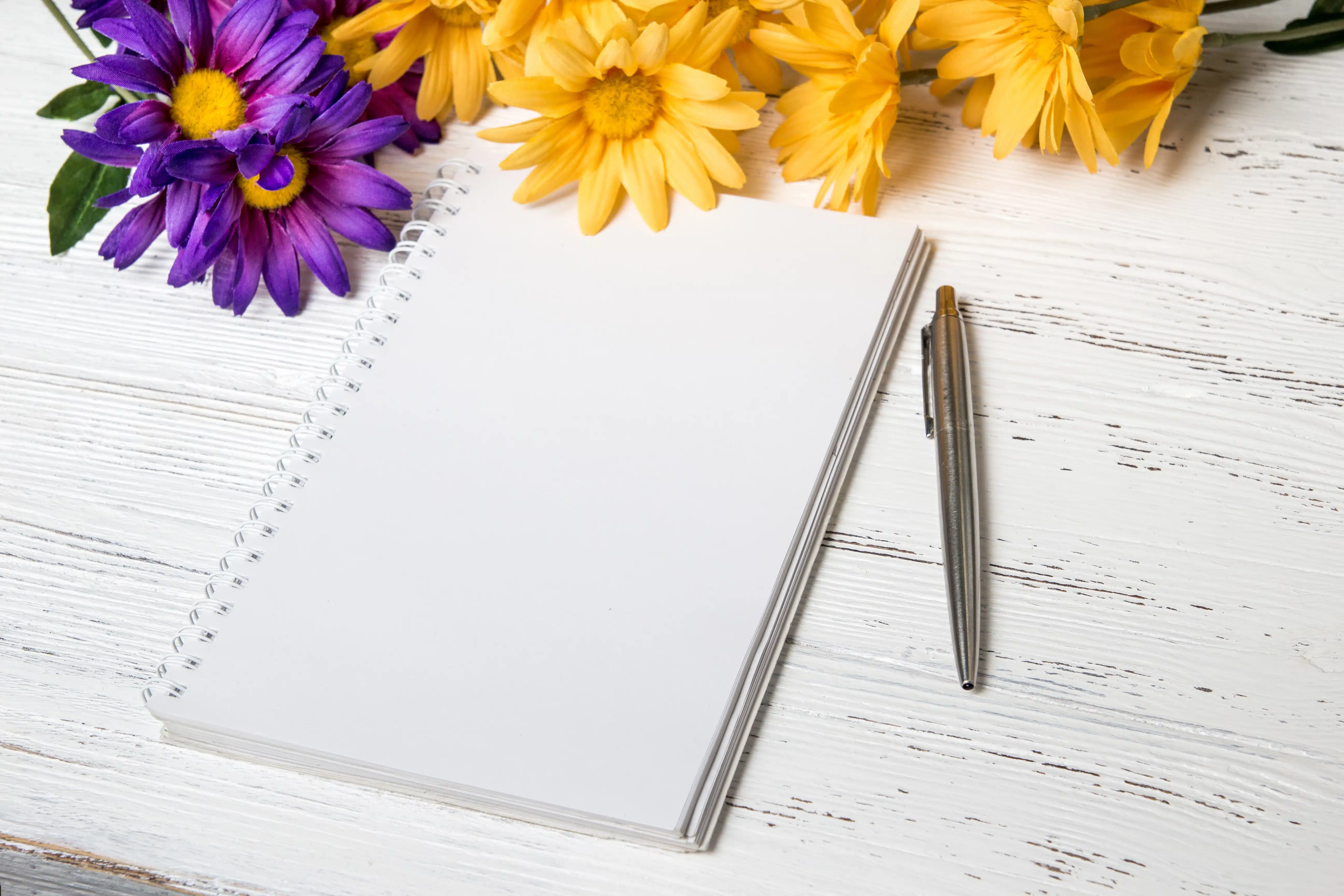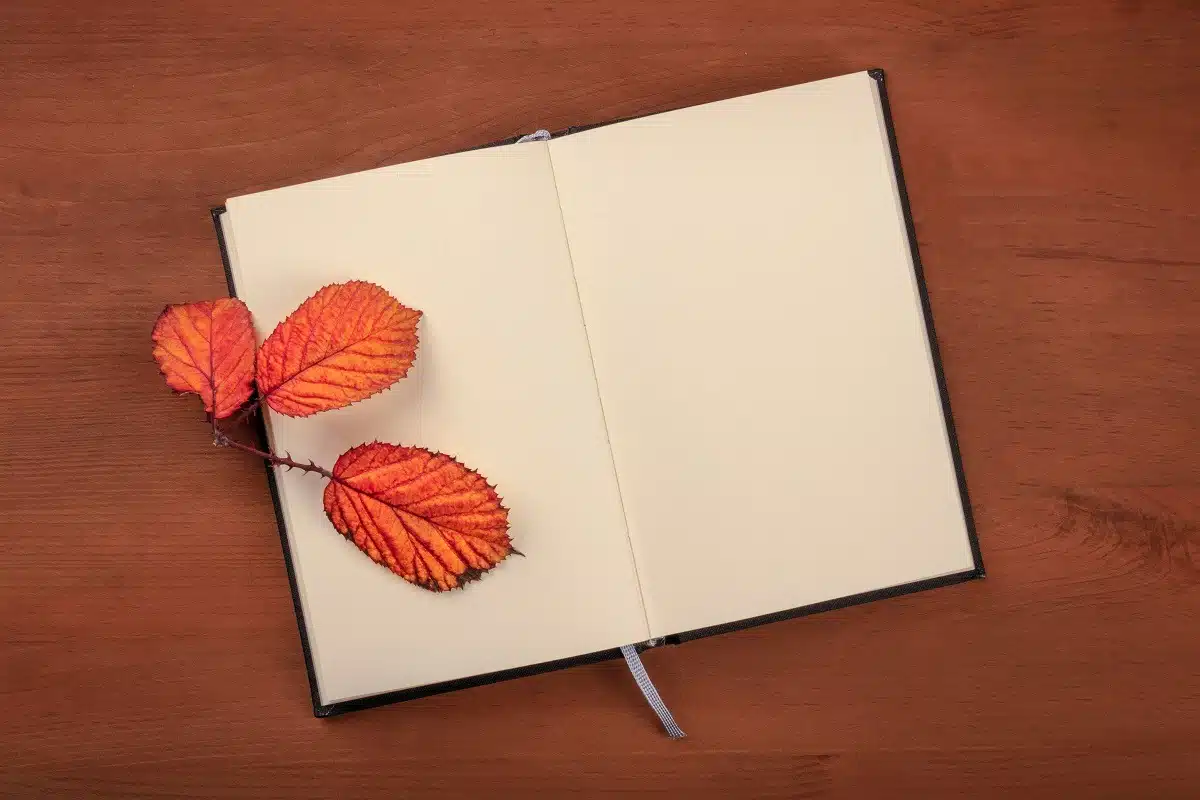Here’s what the Cut-Up poetry form is:
Cut-up poems also called ‘remix poems’ or ‘découpé’ poems, are an offshoot of found poetry in which a poem is generated by cutting apart a preexisting work and rearranging pieces of it into a new poem.
The physical act of cutting is arguably a core feature of the form, though the digital era may expand the definition.
So if you want to learn all about the Cut-Up poem type, then you’ve come to the right place.
Let’s jump right into it!
- Erasure Poetry Form: Embody Art in Absence
- Blackout Poetry Form: Illuminate With Shadows
- Dada Poetry Form: Free Your Imagination
- Chance Operations Poetry Form: Etch Fate’s Lines

Forms of Poetry: Cut-Up Poetry

Cut-up poetry (or découpé poetry after the French tradition) is poetry that is literally constructed out of clippings that have been cut apart and reassembled into a poem.
This type of poem has been likened to a collage, in that both involve taking something that already exists and rearranging the pieces to create something new.
Cut-up poems are not especially common and rarely find mainstream success, but they can be a fun exercise for both new and experienced poets.
Basic Properties of Cut-Up Poetry

| Rhyme Structure | Rare; depends on source material |
| Meter | Rare; depends on source material |
| Origin | Primarily Dadaism, but similar techniques have been in circulation since ancient times |
| Popularity | Uncommon |
| Theme | Varies; may or may not reflect the source material |
Key Features of Cut-Up Poetry

Cut-up poetry only has one true key feature, though the variants have features of their own.
The core of cut-up poetry is in its nature as a form of poetic collage.
A cut-up poem will specifically feature words and phrases that were carried over from other works, usually by physically cutting the words out of a book, magazine, newspaper, etc.
Where this branches off into other features depends largely on the individual’s stylistic choices.
A cut-up poem from the era of Dadaism, for example, will be purposely meaningless and arbitrary.
Meanwhile, a more modern cut-up poem is more likely to have had the sources carefully selected, the phrases purposely arranged, and some meaning sought after by the poet.
Regardless of the era or the intent, a cut-up poem is inherently a branch of found poetry.
Found poems assert that poetry can be found in existing works by anyone willing to look for it and consists of poems that borrow their words, usually entirely, from existing works.
The larger concept of found poetry can be traced back millennia.
The specific technique of cutting up published works and rearranging the resulting pieces into a poem is commonly associated with the 20th century.
However, it wouldn’t be especially surprising if older examples were uncovered, since the broader genre of found poetry is ancient.
History of the Cut-Up Technique

While not created by cutting up papers, it should be noted that there are some ancient predecessors to cut-up poems, such as the cento.
Centos (or patchwork poems) are poems that are written entirely by borrowing lines from preexisting poems, usually, one line at a time.
Their origins can be traced all the way back to around the 3rd or 4th century AD.
As such, it should always be noted when discussing cut-up poems that the core concept of shuffling preexisting content to create something new has been around for a very, very long time.
It’s only the specific practice of physically cutting a piece into clippings and rearranging it that is relatively modern.
Cut-up poems themselves can be traced at least as far back as the Dada movement. Dadaism was all about absurdity and meaninglessness.
As a result, one of the most popular ways to produce poetry in the Dada movement was to simply cut clippings out of a newspaper or magazine and then rearrange them by random selection.
The end result would be a poem with arbitrary word choices and punctuation which would almost certainly not have grammatically correct sentences or a comprehensible structure of any kind.
Dadaism thrived on a rejection of logic, so this result was entirely intentional.
Cut-up poems eventually resurfaced around the 1950s, due in part (perhaps appropriately) to random chance.

Artist Brion Gynsin had stacked newspapers on top of each other to protect a tabletop and noticed, upon cutting them with a razor, that the clippings interacted with each other in his head to produce interesting results.
This evolved into the idea of taking clippings and arranging them purposefully, instead of at random, into coherent works that had messages of their own.
Later cut-up poets would carefully select their sources as well, adding layers of craft and intent to a technique that had ultimately emerged from random chance.
A variant of the cut-up technique involves folding pages of a book or magazine to see what combinations of words or phrases the poet ends up with.
This was popularized by William Burroughs, a colleague of Gysin.
Another evolution of the technique was the vocabularyclept poem, coined by Howard Bergerson and J.A. Lindon.
This version involves taking a preexisting poem and rearranging all of the words but often purposely maintaining the structure, including any meter present.
Tips for Writing a Cut-Up Poem

First, you obviously need something to cut the words and phrases out of.
This can be a newspaper, a magazine, a book, a scientific journal, or any print publication that’s readily accessible to you. (Please don’t source these from your local library. It’s rude.)
The original work isn’t especially important, as long as it’s something with plenty of words and phrases to choose from.
Start by cutting out anything that pops out at you.
You don’t necessarily need a plan or structure in mind at this point. Just grab everything you like.
As you go through, you may start to notice some patterns in the sections that point you toward a particular motif, theme, or message. If you do, feel free to gravitate toward that as you cut.
Next, physically shuffle the bits of paper around and look for combinations that seem to work well together.
It’s okay for each line to be its own separate entity, but even better if you can create something that sounds meaningful out of the exercise.
The quality of the end result will vary, but you can decide for yourself how closely you want to adhere to ideals of grammar, syntax, and meaning.
The goal is just to find words and phrases that juxtapose against each other in interesting ways.
As a quick example, if we were to grab a bunch of words and phrases from this article and turn them into a cut-up poem, we might end up with something like this:
A Quick Example: Cut-up Poetry
constructed out of clippings
a collage. depends largely on the individual’s
carefully selected arbitrary word choices
almost comprehensible, coined
The original work
grab everything, feel free
physically shuffle the quality
to create something new

Whether the above example is fair or not depends on perspective, since there was no physical cutting or shuffling involved, but the basics of the form should be apparent.
By recombining words and phrases from elsewhere in the article, a poem that attempts to explain cut-up poetry in the form of a cut-up poem can be written.
Alternatively, we could write something with no relation to the original topic of the article.
Here’s an example that completely ignores the meanings and intents of the original text, but still only uses words and phrases that were present in this article.
The goal is
you obviously need something
Another evolution
a rejection of logic
absurdity and meaninglessness
with no relation to the original
especially important, as long as
the 20th century
Just like before, we only pulled words and phrases from elsewhere in this article.
But this time we end up with a poem that seems to be glorifying Dadaist concepts like absurdity, even arguing that the reader “needs” an evolution of some kind.
Part of the fun of cut-up poetry, and found poetry in general, is in seeing what new meanings you can create out of the options present within another work.
Whether this is an extension of the original, a social commentary, or an entirely new work depends on which pieces you choose to pick and pull.
Poet’s Note

Maybe don’t try this one with your father’s newspaper.
Or at least let him read it first. Bonus points if you can make your poem look like a ransom note.
Comprehensive Collection of Poetry Forms: Craft Words Into Art

Dare to traverse the entire spectrum of poetic forms, from the commonplace to the extraordinary?
Venture from the quintessential Sonnet to the elusive Mistress Bradstreet stanza, right through to the daunting complexity of Cro Cumaisc Etir Casbairdni Ocus Lethrannaigecht.
For those with a zeal to encounter the full breadth of poetry’s forms, this invitation is yours.
Start exploring the vast universe of poetic ingenuity with our comprehensive array of poetry forms right now!
